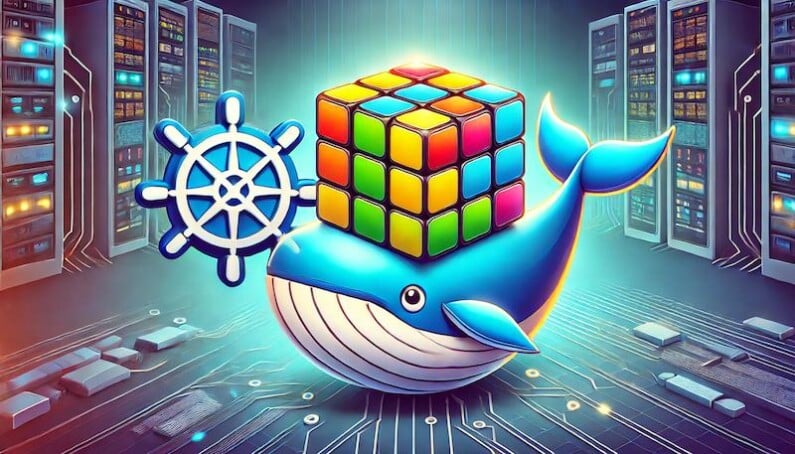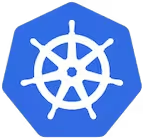How do you manage the growing complexity of IT infrastructures while gaining in agility? The equation seems insoluble. Yet Docker and Kubernetes have emerged as essential solutions for meeting these challenges. How are these tools revolutionising the management, deployment and scalability of applications? What are the best practices for taking full advantage of the agility and scalability they offer?

Docker and Kubernetes modernise infrastructure management. Docker creates lightweight, portable containers, encapsulating applications with all their dependencies. For its part, Kubernetes orchestrates these large-scale containers.
Together, they enable IT teams to deploy, manage and evolve applications with unprecedented agility, by adopting cloud-native and Infrastructure as Code (IaC) approaches.
Docker and Kubernetes are widely used:
- 80 % of developers use containers in their development process, according to the survey State of Application Development Report 2024 from Docker.
- 5.6 million developers use Kubernetes in the world, according to a report by Slashdata
- More than 60 % companies have adopted KubernetesThis figure is expected to exceed 90 % by 2027, according to Kubernetes Market Trends.
However, while they are often associated, Docker and Kubernetes have quite separate roles.
Docker and Kubernetes: distinct but complementary roles
Understanding Docker: containerisation made easy
The idea of containerisation has been around since the 1970s, but Docker made it widely available in 2013, turning the software development industry on its head.
A container allows developers to encapsulate an application and everything it needs to run (libraries, dependencies, configurations) in a single unit of software which, in the case of Docker, is called a "Docker image".

Docker is an open source platform designed to automate the deployment of applications in the form of lightweight, portable containers.
💡 Did you know?
The name "Docker" comes from the English word "dock", which refers to the docks where ships (or containers) are loaded and unloaded. This perfectly reflects the idea behind Docker: to transport software containers between different environments while guaranteeing their integrity.
Docker vs virtual machine (VM)
Unlike a virtual machine, a container does not emulate a complete system. It uses the kernel of the host OS, which makes it lighter and faster. In addition, processes are isolated via namespaces and cgroupsThese are technologies used in containers to isolate and control processes. This ensures that the application runs consistently regardless of the environment, whether it's a developer's laptop, a test server or a production environment in the cloud.
Docker improves the process of developing and deploying applications by making it easier to create homogeneous development environments through Dockerfiles and docker-compose.yml.
With Docker, developers can create a consistent environment from development to production, accelerating the development cycle. In addition, continuous integration (CI) and continuous delivery (CD) become easier to implement thanks to the automation of container deployment via registries (registries) such as Docker Hub or private solutions.
Docker by example
Let's imagine an e-commerce company which wants to modernise its infrastructure.
Before DockerEach time the application was updated, complex coordination between the development and operations teams was required to ensure that all environments were correctly configured.
With DockerThis same company can now encapsulate its payment application in a container. The result? The application goes into production more quickly, with no bugs or inconsistencies between the test and production environments.
In addition, container isolation improves security and stability by preventing applications from affecting each other. For example, if the product recommendation microservice encounters a problem, it will not affect the payment system, thus ensuring the continuity of transactions.
Understanding Kubernetes: container orchestration

From his side, Kubernetes is an open source platform originally developed by Google for orchestrating large-scale containers in distributed environments.
Orchestration is an automated process for managing, monitoring, deploying and scaling containerised applications, ensuring that they run reliably and efficiently.
💡 Did you know?
The name "Kubernetes" is derived from the Greek "κυβερνήτης" (kybernētēs), meaning "pilot" or "rudder". This reflects the role which "steers" the containers to ensure they run smoothly. The Kubernetes logo, a rudder wheel, also symbolises this idea.
Kubernetes manages deployments through objects such as Pods (the smallest deployable unit of a Kubernetes cluster comprises one or more containers), the Servicesthe Deploymentsand ConfigMapsto ensure that applications remain available and performing, even in the event of traffic peaks or incidents.
Kubernetes by example
Let's take the case of a video streaming application.
During rush hour, traffic can increase considerably.
Thanks to Kubernetes, the infrastructure is able to adapt automatically thanks to theHorizontal Auto-Scaling of Pods (HPA). If the number of users suddenly doubles, Kubernetes is able to detect this increase in load via metrics and instantly deploy new containers to absorb the extra load, guaranteeing a smooth experience for users.
Once the peak has passed, it can automatically reduce the number of Pods, optimising resource use and costs in the cloud.
Docker and Kubernetes synergy: the winning duo for agility
Docker provides the standard container format for packaging applications, while Kubernetes orchestrates these large-scale containers within distributed clusters. Together, they offer a complete solution for deploying, managing and scaling modern applications, enabling multi-cloud or hybrid deployments.
💡 Did you know?
Every week, Google runs more than 2 billion containers thanks to Kubernetes! This figure demonstrates not only the robustness of this technology, but also its effectiveness on a large scale.
Their synergy is particularly effective in microservices architectures, where each component of an application can be managed independently.
An online bank could, for example, containerise each of its services (authentication, transfers, account management) separately using Docker. Kubernetes would then be responsible for deploying these containers, scaling them individually as required via deployments, and so on. Canary or blue-greenand communicate effectively between them.
Make your IT infrastructure truly agile
The adoption of Docker and Kubernetes is radically transforming the agility of IT infrastructure. Deployments, which used to take hours or even days, can now be carried out in a matter of minutes..
For example, a SaaS software company can now deploy feature updates several times a day without service interruption, using progressive deployment (rolling updates) and fault tolerance strategies managed by Kubernetes.
💡 Did you know?
The success of Kubernetes rolling updates is so impressive that many large companies, such as Netflix and Airbnb, use them to minimise downtime and roll out new features at breakneck speed.
Infrastructure as Code (IaC) is becoming a tangible reality with tools such as Kubernetes Manifests, Helm Chartsand Kustomize.
A DevOps team can now describe its entire infrastructure - from containers to scaling rules - in versioned configuration files stored in a Git repository. This not only makes it easy to replicate environments using GitOps practices, but also to adapt them quickly to new business needs.
Implementation: a journey towards operational excellence
The transition to Docker and Kubernetes is a journey that requires careful planning and adoption of practices DevSecOps.
Team training is crucial Developers need to learn how to think in terms of containers and write optimised Dockerfiles, while operations staff need to master Kubernetes orchestration, the concepts of clusters, the use of Dockerfiles and the use of containers. Nodesof Podsand tools such as kubectl.
A gradual approach is often recommended. A company could start by containerising a non-critical application, such as an internal holiday management system, and deploying it on a test Kubernetes cluster.
Once mastered, it could extend the approach to more complex systems, gradually deploying a Kubernetes cluster in production and migrating applications one by one, while automating CI/CD pipelines with tools like Jenkins, GitLab CI/CD or CircleCI.
Safety remains paramount. Companies must put in place security policies robust. One example is the restriction of privileges containers with Pod Security Policiesthe use of virtual networks (CNI) to isolate different environments, and the implementation of tools such as RBAC for the access control.
Image scanning tools, such as Clair or Trivy, can be integrated into CI/CD pipelines to detect vulnerabilities before deployment, ensuring proactive security.
Conclusion
Docker and Kubernetes have revolutionised IT infrastructure management by providing cloud-native solutions for containerisation and orchestration. They offer the agility needed to respond to rapid changes in the market while optimising resources. Companies that invest in these technologies and in training their teams are not just modernising their infrastructure, they are adopting a new culture of agility, collaboration and innovation.





